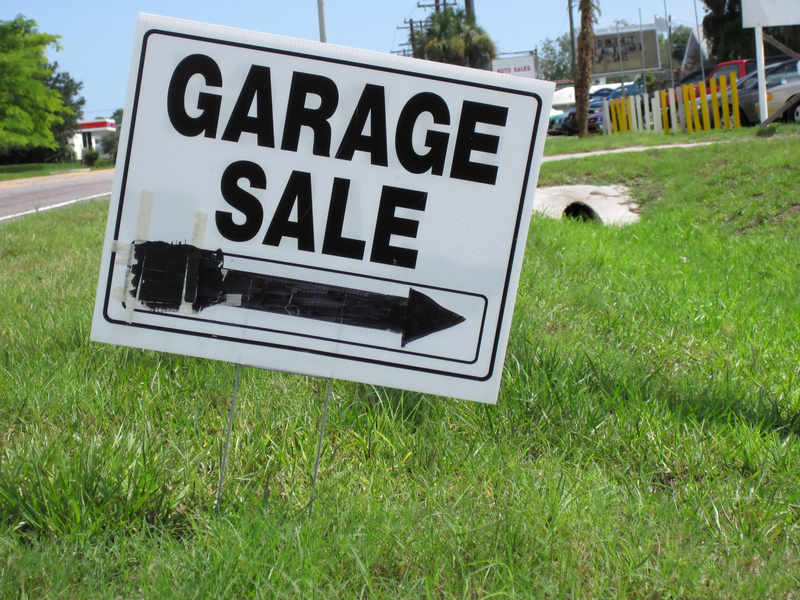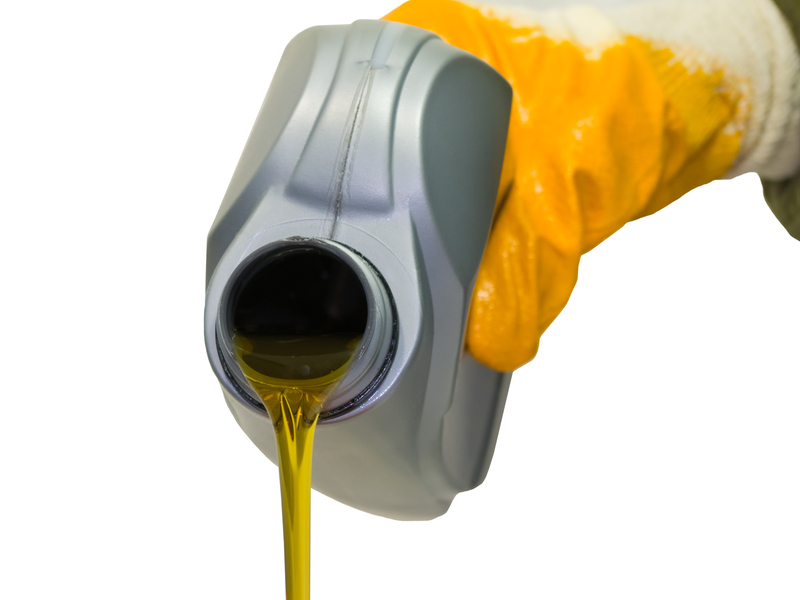Innovations in PPE Waste Disposal You Should Know About
PPE waste disposal has become a crucial topic, especially after the surge in personal protective equipment (PPE) usage during global health crises like the COVID-19 pandemic. The increased reliance on masks, gloves, gowns, and face shields to enhance public safety has led to a staggering rise in contaminated PPE waste. What's more, this waste is often classified as hazardous, adding a layer of complexity to its management. In this in-depth article, we'll explore the latest innovations in PPE waste disposal, answer pressing questions, and guide you through best practices that are shaping the future of sustainable healthcare waste management.
The Growing Challenge of PPE Waste
To appreciate the impact of PPE waste, consider this: According to the United Nations, the world used an estimated 129 billion face masks and 65 billion gloves every month during the peak of COVID-19. The improper disposal of these items has had grave environmental consequences, including:
- *Increasing landfill mass*
- *Ocean pollution from microplastics and toxins*
- *Health risks for waste management workers*
- Threats to wildlife through ingestion and entanglement
Traditional disposal routes such as incineration and landfilling are often insufficient for tackling these environmental and health risks. This pressing issue has spurred a wave of innovative methods for PPE waste management that aim to lower contamination risks and foster sustainability.

1. Advanced Recycling Technologies for PPE Waste
Chemical Recycling: Breaking PPE Down to the Basics
Most PPE, like surgical masks and gloves, are made from synthetic polymers such as polypropylene. These materials are tough to recycle using conventional processes due to contamination and mixed material composition. Enter chemical recycling: an advanced process that breaks plastic components down into their molecular building blocks. The result is clean, reusable materials that can be reincorporated into the supply chain.
- Pyrolysis: Uses high heat in an oxygen-free environment to convert PPE plastics into synthetic oil or gas, which can in turn be used for energy or to manufacture new plastics.
- Solvolysis: Applies solvents to selectively dissolve fabrics, allowing for the separation and purification of raw materials.
- Monomer Recovery: Deconstructs polymers into their monomer components, which can be used to manufacture new, high-quality plastic products.
*Why is this innovative?* Chemical recycling reduces reliance on fossil fuels, lowers greenhouse gas emissions, and helps close the loop in PPE plastic use--making for a circular economy approach to PPE waste disposal.
Mechanical Recycling: Direct Reprocessing at Source
Some companies are piloting on-site mechanical recycling machines for PPE waste. These machines shred, melt, and repurpose PPE plastics into products such as outdoor furniture, construction materials, or even new PPE items. Numerous hospitals worldwide have set up in-house recycling units that enable safe conversion of PPE waste into recyclable pellets.
2. Innovative Decontamination Methods to Facilitate Safe Recycling
The major challenge with PPE waste management is decontaminating items exposed to pathogens. Here are a few game-changing innovations:
- Automated UV-C and Ozone Disinfection: Robotics-driven chambers use ultraviolet light or ozone to neutralize viruses and bacteria on PPE, making them safe for recycling and reducing the risk to workers.
- Plasma-Based Sterilization: Advanced plasma technology is being used to sterilize large volumes of PPE in hospital settings rapidly, enabling safe downstream handling or recycling.
- Microwave-Based Disinfection: New machines harness microwave power to penetrate PPE materials and destroy microbial contaminants before shredding and recycling.
*Why does this matter?* By streamlining the decontamination stage, these innovations make large-scale recycling of used PPE feasible and safe, which addresses public health concerns while minimizing environmental impact.
3. Compostable and Biodegradable PPE Products
Forward-thinking manufacturers are designing biodegradable PPE made from plant-based polymers such as polylactic acid (PLA) or biopolymer blends. These products are engineered to break down in industrial composting conditions, leaving no microplastic residue.
- Compostable Masks and Gloves: New ranges of compostable face masks and gloves are entering the market. After use, these items can go into commercial composting facilities where they break down within months instead of centuries.
- Biodegradable Gowns and Aprons: Some hospitals are now piloting biodegradable PPE lines, providing comparable protection while vastly improving end-of-life disposal options.
Benefits:
- Reduces landfill and ocean waste dramatically
- *Eliminates microplastic contamination*
- *Lowers the overall carbon footprint of healthcare operations*
As more composting infrastructure becomes available, eco-friendly PPE waste disposal will increasingly become the norm rather than the exception.
4. On-Site PPE Waste Collection and Sterilization Devices
In hospitals and clinics, transporting hazardous PPE waste offsite can be logistically complex and costly. To address this, new on-site solutions are streamlining the process for both safety and sustainability.
- IoT-Enabled Smart Bins: Modern waste bins are equipped with sensors that track fill levels, ensure proper segregation, and alert staff to overflow risks--all while logging data for compliance tracking.
- Compactor-Sterilizer Hybrids: Advanced devices combine waste shredding, compaction, and sterilization, allowing volumes of PPE waste to be minimized in a safe, contained manner. The sterilized, compacted waste can be safely disposed of or sent for recycling.
- Mobile Incinerators with Emissions Control: For remote or emergency settings, new compact incinerators with advanced filtration systems can destroy PPE waste on-site and reduce carbon emissions by capturing toxic byproducts.
These solutions offer quick, efficient, and regulatory-compliant site-based PPE waste management, which is essential for high-pressure settings like hospitals and disaster response operations.
5. Waste-to-Energy Solutions for PPE Disposal
While reducing and recycling take precedence, a portion of PPE waste may be unsuitable for recycling due to material complexity or high contamination levels. This is where waste-to-energy (WTE) technology steps in.
- Advanced Incineration: Modern incinerators equipped with energy recovery systems convert PPE waste into electricity and heat, which can power hospital facilities and reduce fossil fuel consumption.
- Gasification and Pyrolysis: These processes thermochemically convert plastic-rich waste into syngas or synthetic oils, which can be used as low-carbon energy sources or further refined for industrial use.
- Emissions Control: Continuous monitoring and advanced filtration systems ensure that hazardous emissions (like dioxins and heavy metals) are captured and neutralized, reducing the environmental footprint of incineration.
*Key benefit:* Waste-to-energy plants transform problematic PPE waste from an environmental liability into a sustainable, circular resource.
6. Digital Tracking and Compliance Systems for PPE Waste
An often-overlooked aspect of PPE waste management innovation is data. New digital solutions ensure full traceability of hazardous waste from source to final treatment:
- Barcode Scanning and RFID Tracking: Bins and bags are tagged and scanned at each stage of collection, transport, and processing, ensuring accurate records and regulatory compliance.
- Cloud-Based Compliance Software: Integrated software platforms log waste quantities, storage times, and sterilization records, which simplifies compliance with local and international health standards.
- Predictive Analytics: Data analytics can predict peak times for waste generation, optimize collection schedules, and identify areas where waste reduction strategies would be most effective.
This digital-first approach enhances transparency and safety while enabling granular insights for continuous improvement in PPE waste disposal processes.
7. Community-Based PPE Waste Collection Initiatives
Beyond the healthcare sector, community-level PPE waste collection programs are making a difference. These initiatives are critical in public spaces, schools, transit systems, and multi-residential buildings where improper disposal can lead to cross-contamination and environmental littering.
- Specialized PPE Drop-Off Points: Local authorities and private enterprises are establishing dedicated collection bins in public locations for safe and hygienic disposal of masks and gloves.
- Awareness Campaigns: Education-driven initiatives are teaching the public how to correctly separate and dispose of used PPE while highlighting the dangers of littering.
- Partnerships with Recycling Companies: Some communities partner directly with firms that specialize in recycling or repurposing PPE waste, closing the gap between collection and sustainable disposal.
Collective, community-driven action will play a pivotal role in shaping a safer and cleaner future in relation to PPE waste.

Best Practices for Responsible PPE Waste Disposal
- Segregation at Source: Always separate contaminated PPE from general waste to prevent cross-contamination and streamline downstream disposal or recycling.
- Use Clearly Labeled Bins: Employ color-coded, clearly marked bins to aid in correct disposal and limit accidental mishandling.
- Regular Training: Ensure that all staff are updated on the latest PPE waste guidelines and innovations.
- Choose Certified Service Providers: Work with licensed waste management partners who use updated, environmentally friendly treatment methods.
- Stay Informed: As legislation evolves and new solutions emerge, stay abreast of advances in PPE waste management to adapt practices accordingly.
The Future of PPE Waste Disposal: Moving Towards Sustainability
With the world's attention focused on infection control, it's critical not to lose sight of the long-term consequences of PPE waste. Fortunately, with a host of innovations in PPE waste disposal--from advanced recycling and on-site sterilization to biodegradable PPE and smart tracking systems--society can now mitigate the environmental impact while maintaining public safety and regulatory compliance.
Ultimately, a multifaceted approach that combines cutting-edge technology, legislation, industry best practices, and community engagement will enable the safe and sustainable management of PPE waste in healthcare and beyond.
Key Takeaways
- Innovation is driving sustainability: New methods for decontamination, recycling, and material science are revolutionizing PPE waste disposal.
- Digital solutions matter: Smart tracking and data analytics are boosting compliance and efficiency.
- Biodegradable PPE is on the rise: Expect to see more eco-friendly protective gear in clinical and community settings.
- Waste-to-energy and community programs are vital complements: They ensure no PPE waste is left unmanaged.
By adopting these innovations in PPE waste disposal, healthcare institutions, businesses, and communities can work together to minimize environmental harm while prioritizing health and safety.
Stay updated on the latest advancements in PPE waste solutions to keep your practices safe, legal, and sustainable--and help protect our planet for future generations.
